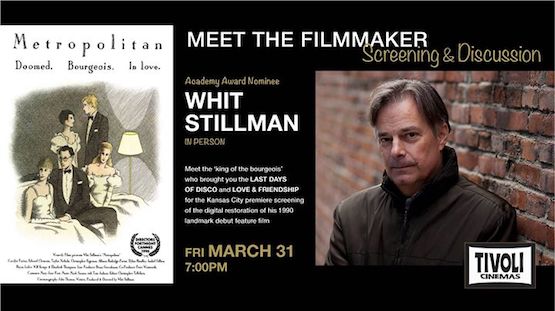
(Now it can be told…Michael Lynch – who died two weeks ago – is a Kansas City native and friend of Dwight Sutherland. He wrote this story two years ago but it was never published owing to a dispute over the authorship. Enjoy.)
Two weeks ago I was at the Tivoli Theatre in Westport for a special screening of the 1990 comedy of manners, Metropolitan…
The film’s director and writer,Whit Stillman,was there that night to answer questions about the re-release of the movie (notably, “Where Are They Now?” in regard to the cast). He also talked about his other works, including “Love and Friendship”, last year’s screen adaptation of the little known,but charming, early novel of Jane Austen.
When I ran into my friend Michael Lynch and his wife Vickie at the Tivoli that night, I realized how much the subject matter of “Metropolitan”- a group of rich kids meet casually at a party and romance and other complications follow-matches Lynch’s own story. (I’m referring to my 3-20-17 post, which describes his circle of friends, the Bohemian Hoboes or ‘Bohos’ to their intimates.)
The ‘Bohos’ were a group of kids who hung out together back in the late 50’s and early 60’s. I posited that the decade 1955 to 1965 was the Golden Age to be a teenager growing up in Kansas City. The young people in ‘Metropolitan’, the ‘Urban Haute Bourgeoisie’ (or ‘UHBs’as they portentously describe themselves) were their New York equivalent.
In fact, during the Q&A after the movie, one member of the audience asked if it was true that one of the characters in Stillman’s movie was modeled on a man who originally came from Kansas City.
Whit confirmed this!
Both groups partied in the old money venues of their respective cities. The KC Bohos hung out in mansions in Mission Hills, on Ward Parkway, and around Loose Park. Stillman’s gilded youth had as their home turf Manhattan’s Upper East Side and beach houses in the Hamptons.
In both cases the groups of friends (and lovers) gelled in a single evening – Lynch’s Bohos at a party given by his daughter Jesse at Thomas Hart Benton’s home in Valentine on May 11, 1957, Stillman’s UHBs at a debutante party at New York’s Plaza Hotel a dozen or so years later.
In both instances, the members of the sets became so emotionally intertwined that they got together virtually every chance they could for years afterward.
The New York Times ran a profile of Stillman last year and interviewed his old girlfriend from the era in which ‘Metropolitan’ was set. The woman, Ann Pyne, now a successful business woman in New York, said she had been moved to tears when she first saw the film, so perfectly had Stillman caught the atmosphere of their circle, i.e. “Whit had gotten everything right.”
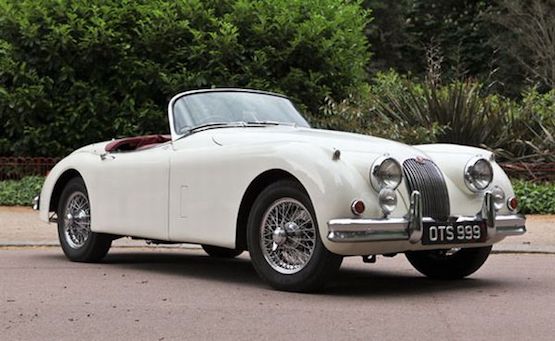 Both Stillman’s “UHBs” and Lynch’s Bohos were very earnest in their discussion of the “Big Questions.”
Both Stillman’s “UHBs” and Lynch’s Bohos were very earnest in their discussion of the “Big Questions.”
As you expect for thoughtful adolescents, these would include; “Love”, “Sex”, “Ambition”, and: “Success.” For the Kansas City crowd’s curriculum of dissent from Eisenhower’s cultural ennui, the texts were by dissidents Right (E.E. Cummings and T.S. Eliot) and Left(Kerouac, Ginsberg, Cassady)
The circle of trees where the Boho’s drank in Loose Park was called “The Sacred Grove”, a nod to the Show-Me States’ Bard’s best known collection of essays.
In Stillman’s circle of friends, thinly disguised in Metropolitan, the literary inspiration came from Jane Austen and critic Lionel Trilling, plus an obscure 19th century Socialist Joseph Fourier, thrown in for comic relief!
What made the Kansas City Boho’s so vital were two consuming passions, jazz and automobiles.
Knowledgeable observers have said that the former is the only art form which is uniquely American. It’s only recently that I’ve realized that Kansas City had such a pivotal role in the growth and development of jazz.
While strictly speaking New Orleans may have been the birthplace of jazz, Kansas City was where it grew up, i.e. many jazz greats like Count Basie, Charlie Parker and Mary Lou Williams had their start in Kansas City.
Many African-American musicians had left The Big Easy in the wake of the First World War due to a resurgence of bigotry and violence, directed at returning black veterans, who were not about to resume the subservient status they’d held before the war.
While Kansas City was also strictly segregated, places of entertainment here, particularity the gambling clubs along 12th Street downtown, offered good work for black musicians. The fact that the jazz was a merely a backdrop to the gambling was a happy accident, as was the fact that the best playing occurred after hours when the clubs closed, and the different musicians would gather at one place for a jam session.
This tradition continued for years, well into the Boho’s era. By then, the locale was the Musicians Union Building at 1823 Highland. (An interesting footnote-the usual 1:30 a.m. closing hour did not apply on Sunday, due to the old Kansas City Blue Laws. This led to bar owners to make up for lost time by opening at 12:00 a.m. on Monday morning, i.e. ‘Holy Hour’! This was the quirk that led to the infamous Loose Park bust of the Boho’s I mentioned in my column of 3/20/17.)
The Bohos thus had unique access to a wonderful Kansas City heritage, which they enjoyed at any number of local establishments, as well as their unofficial club house, the Nichol’s house on Drury Lane in Mission Hills. Jay Nichols even got Dizzie Gillespie to come give a talk at Pem-Day!
D.H. Lawrence once said the only truly modern sensation was speed.
If that was the case the Bohos were consummate modernists in more than their taste for poetry. Besides jazz, a love of cars, particularly British sports cars, was another distinguishing characteristic of the group. Not only did they frequent such local tracks like Riverside and Fairfax, they went much farther afield, migrating en masse to Sebring in Florida each spring for a number of years.
The other aspect that set the Bohos apart from most other groups of people their age was the support system of their families. As I mentioned the Mission Hills mansion of Jay Nichols’ parents, Marty and Clyde was the base camp for their forays. The Nichols senior reasoned it would be better to have them under some supervision at their home, however relaxed, rather than none at all elsewhere.
When some of the other parent’s complained of the Bohos’ wild ways and questioned what they were up to at the Nichols house, Clyde told them to come over and see for themselves.
None took him up on the offer and so the good times rolled at 2401 Drury Lane. (The “party bus” was still parked in the driveway forty years later. I was at the house recently and it looked ready to hold the next bicycle races on the circular drive, blast loud speakers at the neighbors, and hold chess tournaments in the living room and fencing matches on the tennis court, all of which were apparently regular occurrences when the Bohos were in town.)
Nor is it likely that Stillman’s Upper East Side preppies could match drinking and watching horror movies like “Rodan’ on one of the last round TVs in Kansas City (see Susan Sontag, Notes on Camp, 1964) at Dinnie Groves’ house at 55th & Summit, facing Loose Park, as the Bohos did. This was supplemented by running wires over 55th Street to have impromptu jazz concerts and poetry readings in the park.
How many parents anywhere would have been so tolerant?
One thing that Stillman’s UHBs and Lynch’s Boho did have in equal degrees was impressive records in later life. Consider the Kansas City set’s trajectories
Harper Barnes worked for the St. Louis Post Dispatch as a pop music and move critic. He was also the editor of the Boston Phoenix, an alternative newsweekly that brought investigative reporting to the region and is memorialized in the movie, Between the Lines.
Barnes has written three books, one on the death of Bennie Moten, the Kansas City jazz pianist, who died when he was turned away from white-only hospitals. Another limned the horrendous East St. Louis race riots of 1917, a stain on Missouri and National history.
Ian Cumming dropped out of medical school, but more than made up for it, getting a Harvard M.B.A. which prepared him for a spectacular business career. He became Chairman of Leucadia National Corporation, a conglomerate that propelled him onto the Forbes 400 list
John Downing enrolled at Georgetown Law School and hired on as the office boy in the Time-Life news bureau in Washington, D.C. He later joined the Fortune Magazine staff in New York as a promotion manager. He then spent over 20 years at Reader’s Digest, ending as Publisher of General Books. He also served as VP of Marketing for Guideposts Publications.
Lee Green lived a bohemian life, writing a newspaper column in New Orleans for a time.He ultimately returned to Kansas City to live in his mother’s house where he made his own beer, earning his living as a surveyor.
Dinnie Groves began his Southern California career as Assistant manager of Lon Servicing at Ralph C. Sutro. He moved to San Francisco where after securing the American Electronics Association Endorsement, he designed insurance programs for Silicon Valley, startups, many of which have become household names. He closed out his career at Thrivent, helping people with their financial planning.
Ted Hoppe (dec.) became a sculptor and one of his works can be seen at the Black and Veatch building on State Line, although it is somewhat hidden by landscaping. Fred Heryer obtained advanced degrees in Romance Languages and Library Science from U.C. Berkeley. During the 1970’s he worked as a bibliographer at Harvard College Library and at Yale University Library. He later moved to Carmel, CA where he started shipping business for fine art and other valuable items.
Fred King moved to the San Francisco Bay area in the early 60s and started a business selling folk art and Native American jewelry. In the 1970s he opened a gallery specializing in historic Native American art, and now conducts private transactions with collectors from his office in Santa Fe.
Robert Lemon got a Ph.D. in Comparative Arts and went on to become Chairman of the Art Department at Rollins College and Marshall University. He is noted for his fabulous tours of Italian art sites that have been enjoyed by students, faculty and the public. They continue today with the old Professor Emeritus still at the top of his game.
Michael Lynch became a Senior Executive at a mutual funds group, an insurance company and small cap money manager before transitioning into collector car consulting. Clients include collectors, museums, universities, auction houses and organizers of automotive events. He has been an expert commentator on TV and radio and is the author of an award-winning book, American Sports Car Racing in the 1950s.
Anne Morgan was one of two women in her class at KU Law School. She became a President in Trust Department of the First National Bank and also acted as a Criminal Defense Attorney in Johnson County. Presently in Arizona, she has recently made noises about returning to the KC area.
Fred Myers (dec.) became an architect. Some of his work included Penn Valley Community College campus complex, the Intercontinental Hotel, the Missouri State Office Building at 13th and Locust and the UMB Headquarters at 1010 Grand. He did numerous private residences, including a spectacular one for Fred Heryer in Carmel Valley CA.
Tom Nelson became one of Kansas City’s leading architects and was a founding member of BNIM Architects He work includes the Truman State Office Building, The Deramus Pavilion at the Kansas City Zoo, One KC Place and the Ward Gallery and Ford Learning Center at the Nelson- Atkins. He has been a leader in civic and professional activities including Chairman of the KC Planning Commission and President of the AIA.
Jay Nichols stayed on as a case writer after graduating from Harvard Business School. He was later a merchant on his grandfather’s Country Club Plaza before taking over Nichols Industries. He retired after 26 years on the Board of Leudadia National Corporation and cycles between homes in Kansas City, Sante Fe and Lake Tahoe.
Wayne Nichols and his wife, Susan Guernsey Nichols, designed, built and sold one of the earliest passive solar communities in the county. Over the years, they have educated thousands of engineers, architects and builders on how to use the latest solar technology. They are presently developing a renewable resource community in midtown, Santa Fe.
Bob Peters began a career in the financial services industry in 1962 and was a Partner at B.C. Christopher for almost 20 years. He was on the Board of the National Securities Traders Association and retired from H & R Block’s securities division. A lifelong car and motorcycle enthusiast, Bob has contributed time and expertise over the years to various car and motorcycle organizations and events in the region.
Ray Riepen was one of the founders of three institutions in Boston, the Boston Tea Party think Fillmmore Ballroom, The Boston Phoenix newspaper and WBCN, formerly a religious and classical music station, that he converted to a 24-hour rock format in the 60s. Almost every student in Boston’s 50 colleges and universities plus the broader public was touched by what Ray created. He also owned Milton’s after the death of the founder.
Judy Robinson worked as a Journalist and a Legislative Aide for Senator Gaylord Nelson and Representative David Obey (both D-WI). She has written eight books on historic and political figures and is working on the third volume of her family history, which dates from the 17th Century in New York.
Richard Rundell is a professor Emeritus at New Mexico State Where he was head of the Language and Linguistics Department for 36 years.
Jane Seaver became a lawyer and progressed to managing a law firm in Texas. Shewas married for a time to Briggs Twyman.
Briggs Twyman (dec.) became a professor of Ancient History at Texas Tech. He was not totally enamored of his surroundings, often referring to his Lubbock TX location as Lubuttock.
Robert Wagstaff became a distinguished lawyer, having two cases before the Supreme Court before he was 38. When Bush II was elected, Robert chose to live in the U.K. for the duration of the two terms. While there, he earned three more law degrees at Oxford, including a DPhil. He returned when Obama was elected and still practices law from offices in Alaska and Carmel CA.
William F. Woo (dec.) began his journalism career at the Kansas City Times. He later became the first Asian-American to head a major America daily newspaper, when he took the Editor’s position at the St. Louis Post Dispatch. After retirement, he was a visiting professor at Stanford and the University of California, Berkeley. He is the only person to be a Pulitzer Prize runner-up in three separate categories.
I had a teacher at Pembroke who said that the mark of a true friendship was the ability to take up where you left off, even if you hadn’t seen your friend in years.
In speaking to Mike Lynch and Whit Stillman, they both tell me that this quality characterizes their groups of friends, still close after sixty and fifty years respectively. Would that all had had such happy youths!
I don’t begrudge either their happy memories and appreciate their willingness to share them with me




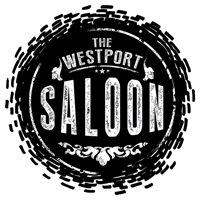
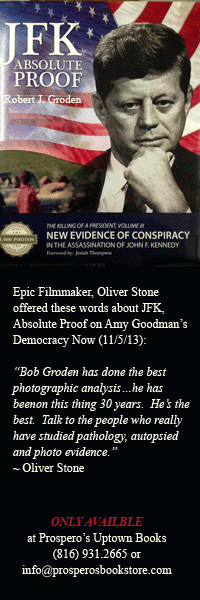

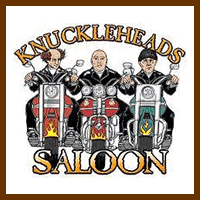


I’m trying to track down Judy Robinson regarding her work with Senator Gaylord Nelson. Can you help?
Not ringing any bells, sorry. Lemme think about it a bit